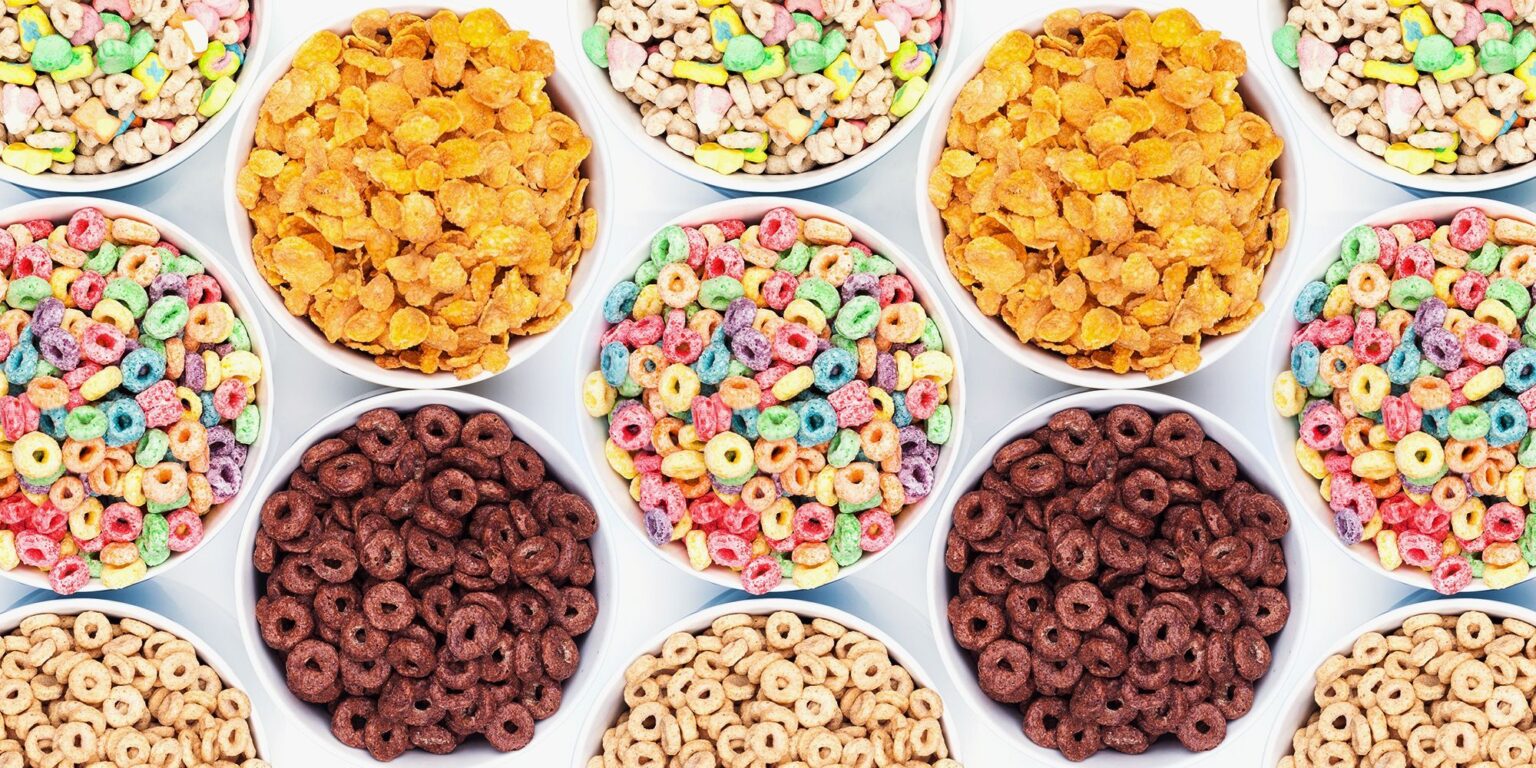It’s quick and easy, but if you want to make a bowl that’s genuinely healthy for you, follow the advice of nutritionists and be creative. When it comes to breakfast, few options are as quick and economical as cereal. Unfortunately, your standard cereal box doesn’t always get high marks for nutrition; in fact, some well-known brands (such as Honey Nut Cheerios, Special K Original Cereal, and Raisin Bran) would be disqualified from using the term “healthy” on their packaging as a result of proposed changes from the U.S. Food and Drug Administration (FDA).
Cereal is typically high in carbohydrates and low in protein, which doesn’t make for a balanced meal, notes Sherry Roberts, RDN, MPH, CDCES , a registered dietitian-nutritionist and certified diabetes care and education specialist with CRM Counseling, a coaching and wellness company in Centerville, Minnesota. Many cereals also contain added sugars, she says. Too much added sugar may increase your risk of heart disease, dementia, diabetes, and obesity, per the American Heart Association (AHA).
The news isn’t all negative, though: A study published in the March 2022 issue of JAMA Network Open identified a link between cereal fiber and older individuals’ reduced risk of heart disease and inflammation. You may make your bowl of cereal into a wholesome, well-rounded meal in a variety of ways by avoiding common cereal errors. Use these dos and don’ts as a guide to help you begin your day in a healthier way.
1. Do Select Whole-Grain Options for Plenty of Fiber
Choosing a cereal composed of whole grains is the first step in making it healthier. According to the AHA, whole grains are excellent sources of fiber, which lowers your risk of heart disease, stroke, and type 2 diabetes while also lowering blood cholesterol levels.
Cereal can be a fantastic method to improve your intake of fiber, which many people don’t get enough of, according to registered dietitian-nutritionist Paula Doebrich, MPH, RDN, owner of the private practice Happea Nutrition in New York City. Make sure that whole grains like whole wheat, quinoa, bulgur, and millet are mentioned as the first ingredients on the label, recommends the Seattle-based registered dietitian-nutritionist Ginger Hultin, RDN, the author of Meal Prep for Weight Loss. Also, Doebrich advises looking at the nutrition facts label to confirm that each serving of the cereal offers about 20% of your daily value (DV) for fiber. Avoid cereals that provide little more than 5% of the daily value. According to the FDA, the revised nutrition facts label includes this proportion so you won’t need to conduct the calculations.
2. Don’t Choose Added Sugars
Cereals for breakfast sometimes have surprisingly high sugar content. For instance, a serving of Kellogg’s Smart Start Antioxidants cereal contains a whopping 18 grams (g) of added sugar. It almost meets the AHA-recommended daily added sugar limits of 25 g for women and 36 g for men.
“It’s always preferable to stick to cereals that have less added sugar, as they will usually be fewer in calories and higher in fiber,” Doebrich advises. Roberts advises selecting breakfast cereals with no more than 5 g of added sugar.
3. Do Add Fruit for More Flavor, Fiber, and Nutrients
Your morning bowl of cereal can easily gain in flavor and nutrition by adding fresh, frozen, dried, or unsweetened fruit. Especially if your preferred cereal is deficient in fiber, says Doebrich.
According to estimates from the U.S. Department of Agriculture, one cup of fresh blueberries, for instance, has almost 4 g of fiber (USDA). Also, you’ll receive 29 micrograms (mcg), which is 24.2% of the DV for vitamin K, and 14.6 milligrams (mg), which is 16.2% of the DV for vitamin C. Moreover, Doebrich adds that fruits like blueberries, strawberries, bananas, and raspberries offer sweetness without the need for additional sugar.
4. Don’t Overfill Your Bowl
It’s simple to pour double or even treble the portion size of cereal unless you’re measuring it out, which will significantly reduce the number of calories you consume each day. For instance, the original All-Bran has 120 calories per two-thirds cup portion. If you eat too much, you can end up with a bowl that contains 240 or 360 calories, not including any additional ingredients like milk, fruit, nuts, or seeds.
Doebrich advises weighing your cereal if you’re attempting to lose weight. It will make it simpler for you to stick to your diet by assisting you in tracking your food intake, she claims.
5. Do Boost Protein with Yogurt
Yogurt can be used in place of regular milk to make cereal healthier. Greek yogurt offers almost three times as much protein as milk but almost as much calcium. According to the USDA, one cup of plain, nonfat Greek yogurt has about 21% of the daily value (DV) for calcium and 25.2 g of protein.
Protein, according to research, promotes satiety. Hence, if you include a protein source in your cereal, you can feel satisfied with a smaller portion size than if you skipped it, resulting in a reduction in the total number of calories you eat. According to an article in the August 2020 issue of Reviews in Endocrine and Metabolic Diseases, this may aid with weight management.
6. Don’t Choose a Low-Protein Milk Alternative
Soy may be your best choice if you’re seeking for a plant-based substitute because it “also supplies enough of protein,” according to Doebrich. If you consume almond or oat milk, you might be losing out on something because other plant milks are often lower in protein. According to the USDA, almond milk, for instance, only has 1.3 g of protein per cup. Comparatively, a cup of nonfat cow’s milk with the same quantity of calcium includes 322 mg (almost 25% of DV), 8.4 g of protein, and approximately 25 g of protein.
Whichever you choose, just make sure to select an unsweetened variety of plant-based milk because they can also include additional sugars, advises Hultin.
7. Do Sprinkle on Some Nuts and Seeds for Protein and Healthy Fats
I advise my clients to add an ounce of nuts to their breakfast to provide flavor and nutrients, said Hultin. She explains that 1 ounce is roughly the size of the palm of your cupped hand.
Protein, fiber, and good fats are all found in nuts. According to the USDA, 1 ounce (oz) of pistachios (without shell) contains 4.3 g of polyunsaturated fats, 5.8 g of protein, and over 3 g of fiber. According to the AHA, mono- and polyunsaturated fats can aid in lowering levels of low-density lipoprotein (LDL, or “bad”) cholesterol in your blood, which can lessen your risk of heart disease and stroke.
You are welcome to select your own nut, but if you need suggestions, Hultin suggests walnuts, almonds, and hazelnuts are all excellent choices. Remember that nuts are high in calories, so limit your intake to 1 oz for 160–180 calories, according to the Academy of Nutrition and Dietetics. Don’t like nuts? A nice alternative is seeds. According to the USDA, one ounce of chia seeds, for instance, has 6.7 g of polyunsaturated fats, 9.8 g of fiber, and 4.7 g of protein, or 35% of the daily value. Additional seed choices include flax, sunflower, hemp, and pumpkin. Stick to an ounce or two of seeds per day, advises Harvard Health, as they are also high in calories.
8. Don’t Skimp on Vitamins and Minerals
According to the National Cancer Institute, several cereals have been fortified, which means more nutrients have been added to them. Doebrich says, “Fortified cereals contain significant nutrients that are frequently lacking in our diets.
Iron, calcium, zinc, and folate are typical dietary supplements that are added to cereals. The FDA authorized cereal producers to increase the amount of vitamin D fortification beginning January 5, 2023. Since that research indicates that around 50% of people worldwide don’t consume enough of the “sunshine” vitamin, food fortification is crucial.
A certified dietitian should be consulted to determine which nutrients you need more of and how much to seek for in fortified foods and supplements because some fortified cereals contain large quantities of vitamins and minerals.




